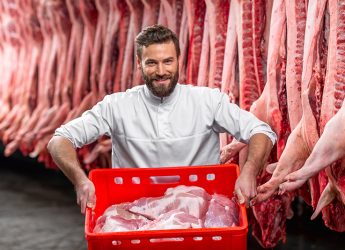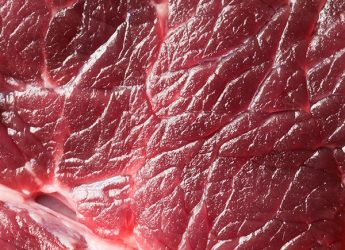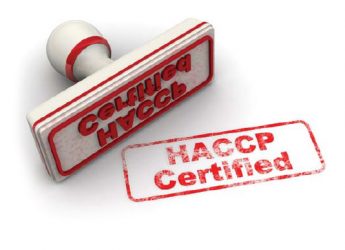The conveyor fryer seems to smell fried
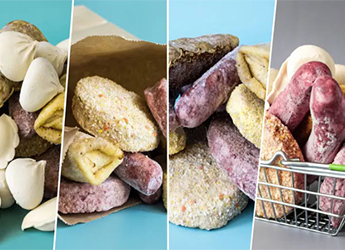
If the smell is pleasant and appetizing, it means that the heat treatment of culinary meat products process is successfully carried out using specialized technological equipment.
Common to modern active and busy life, the lack of the ability for a wide range of consumers to prepare meat dishes at home has determined the trend towards an increase in the production of instant meat products, as well as high and complete culinary readiness of meat products. Research has shown that the time spent preparing food at home has decreased over the past decades from 1 hour (1980) to 19 minutes (2022). Our industry traditionally produces frozen meat and meat-containing semi-finished products, which require subsequent culinary processing.
These are
- dumplings products (65% of the Ukrainian market)
- nuggets – 8%
- cutlets – 6%
- benderiki – 3%
- schnitzels and meatballs – 1%
- pancakes and pasties – 12% (at the end of 2022).
The heat treatment process of these semi-finished products at home requires certain skills and duration, and its mode is strictly determined by food safety requirements because the products consist entirely or partially of raw meat! Processors’ response to the requests of the busiest and laziest customers of meat products has become products of full culinary preparation:
- steak
- languette (chop cutlet)
- entrecote
- escalope
- beef stroganoff
- kebab
- goulash
- rump steak
- cutlets
- meatballs
- rissoles
- schnitzels
- kupati
- pates
- pates
- fried sausages
- benderiki
- zrazy with meat
- baked meat products
- fried liver
- boiled tongue
- fried whole muscle
- and minced poultry products
And this is far from a complete list of products. According to analysts, there was an annual increase in the production of fully prepared food products, which amounted to 20-25%, and was associated primarily with the development of retail chains in large cities and fast food restaurants.
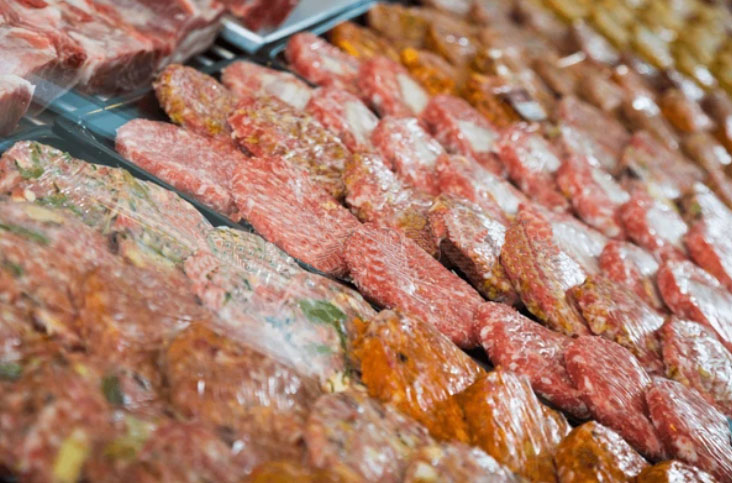
What difficulties did manufacturers face?
When developing a new product range, manufacturers encountered several difficulties of both a technical and marketing nature. Technical problems include the need to purchase and master specialized equipment capable of ensuring proper heat treatment and packaging of culinary meat products. One company had to invest more than 2 million dollars in equipment to organize the production of fully cooked poultry products and it is far from the highest figure. An important and difficult task for producers of this type of meat product is to ensure acceptable deadlines for their implementation. The fully cooked meat products supplied to the market are frozen or chilled. The sales period for frozen products is determined depending on the type of product, the technology used by manufacturers, and the characteristics of packaging materials. Thus, finished poultry products can be stored for up to 1year, other manufacturers of fully prepared meat culinary products indicate a much shorter sales period of up to 3 months. Chilled fully cooked meat products can be stored for up to 12 days at a temperature of 2°C to 6°C if they are hermetically packaged using a modified gas environment. In regular packaging, these products are stored at the same temperature for no more than 2-3 days, depending on the product characteristics. Marketing ready-to-cook meat products has also proven challenging. The potential consumer of this type of product does not have enough information about the product features, storage, and usage. Culinary meat products offered for sale in frozen food departments, where the vast majority of products are semi-finished products with a low degree of culinary readiness, scare off potential buyers with a high price, which also includes the need for heat treatment, more expensive packaging materials, and the provision of specific storage conditions. To eliminate this psychological barrier, manufacturers force to make additional efforts trying to offset the costs of advertising and promotions with products of low culinary readiness that are in stable demand.
The extensive range of culinary meat products determines the variety of methods for their heat treatment which include
- frying
- boiling
- blanching
- deep-frying
- baking, etc.
A conveyor fryer, electric frying pans (salsomat), and other technological equipment are used for frying culinary meat products. This type of heat treatment is also called dry heating, as the water is not used in this case. When culinary products are fried, the outer layers lose moisture under the influence of high temperatures, and the temperature of the outer layer rises to values exceeding 100°C, forming a crust on the surface of the products. Physical and chemical changes occur with the substances contained in the dehydrated layer, which determine the characteristic organoleptic properties of the food products subjected to frying and largely determine their consumer attractiveness. However, when the surface temperature increases above 135°C, substances with an unpleasant odor begin to be released, and the processed products acquire a specific “burnt” taste. A thin layer of fat, characterized by low thermal conductivity, promotes uniform heating of the product and protects it from burning.
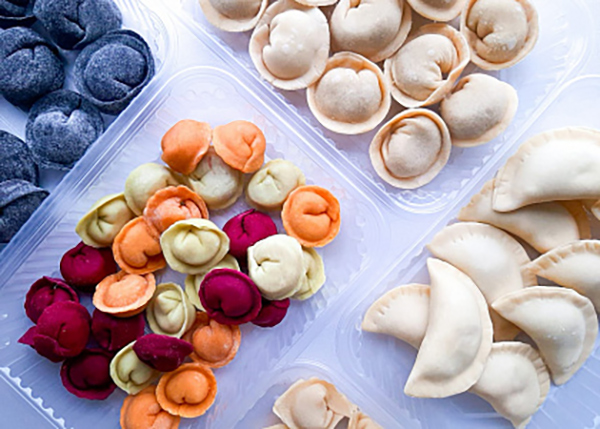
What to do for product safety?
To ensure the customers’ safety while frying meat culinary products, it is necessary to foresee possible sources of bacterial contamination or other hazards, which must be considered when developing and implementing HACCP systems in meat processing plants. Since when performing this technological operation, the causes of possible microbial contamination may be the failure of personnel to comply with proper sanitation rules and the heat treatment regime provided for in regulatory documentation, it is necessary to train operators in the correct methods and techniques for working with frying equipment. Detergents, which residues are found on the surfaces of technological equipment if it is not properly sanitized, can become a source of chemical hazards, so it is necessary to carry out cleaning and sanitizing work on frying equipment in strict accordance with current instructions. A potential physical hazard is metal fragments entering the product. It is especially hazardous when operating continuous frying lines operated in automatic mode. In this case, the preventive measure should be proper maintenance and correct adjustment of the technological equipment used. Meat products that have already undergone heat treatment are often baked. Unlike frying, the technological operation of baking is carried out until a golden brown crust is formed at a temperature of 200-250°C. Cooking is the process of moist heating food products at moderate temperatures to bring the products to a state of culinary readiness, form the required organoleptic characteristics, and increase storage stability. During the cooking process, significant physical and chemical changes occur in the product. When heated, soluble protein substances are denatured, collagen disaggregates, and fats change their properties. The present microflora changes quantitatively. The structural and mechanical properties of the product as a whole change. Short-term cooking of raw materials in water, in their own juice, or a steam environment until partially cooked is called blanching. In practice, to avoid meat burning during blanching, the inner surface of the technological container intended for this technological operation is oiled up with hot fat.
The production of fully cooked meat products is a promising direction in the activities of meat processing enterprises. More and more domestic manufacturers are opening workshops, and buying equipment for semi-finished products, retail chains are also creating products with this equipment under their own brands. Analysts predict a gradual market growth of semi-finished products, which is logical since everyone wants to spend as little time as possible preparing food at home or in public catering establishments.

